Gaia
The Soul Tree Gaia - Immortal Life Tree (a.k.a. Mother Tree)
In the heart of Aer lies the Soul Tree, a remnant of the once-living Immortal Life Tree from Aether. This colossal tree, though broken and scarred by Erebos, is the spirit that sustains all magic and life within Aer. Despite the corruption that once claimed it, its essence endures, binding all Life Trees to its core. From its ancient, shattered trunk flows the Life Stream—a river of souls that cycles all living beings through life, death, and rebirth. The Soul Tree stands as both guardian and guide, nurturing the realms and ensuring the continuation of magic in Aer.
In Aer, mana is more than just a mystical energy; it is the lifeblood of the Soul Tree, the ancient entity at the heart of the realm. Legends say that mana seeps from the tree’s wounds—wounds inflicted during its corruption by Erebos. These deep gashes, still glowing faintly from the tree’s enduring spirit, release a steady flow of mana that weeps into the soil of Aer, spreading throughout the realm. This essence flows invisibly through every living thing, powering the natural and magical world alike. The Soul Tree sustains magic not alone, however, but through the network of Life Trees and Lesser Life Trees, which draw mana from the Soul Tree’s roots, each tree acting as a conduit of its power to nearby lands and creatures. The sap of these trees is rich with mana, connecting Aer in a delicate, life-giving balance that sustains all who dwell within it.
Life Trees, through their deep and intricate roots, are believed to be bound to the Soul Tree’s own roots, creating a vast underground network. These trees, both the mighty Life Trees and the smaller, resilient Lesser Life Trees, channel the mana upward, drawing it into their own trunks and branches where it gathers as sap, thick and luminous with magical essence. This sap flows through the trees like a slow river, nourishing them and feeding the land around them, enriching the soil, air, and creatures in its path. When a creature of Aer draws upon mana for a spell or a feat of magic, it is tapping into this ancient, enduring stream of essence that traces back to the Soul Tree’s heart. Thus, the Soul Tree stands as the ultimate source of magic in Aer, each of its branches, roots, and drops of sap carrying fragments of its powerful, enduring spirit. Through this endless weeping of mana, Aer remains vibrant and alive, touched by the remnants of an ancient, immortal force.
Divine Domains
Arcana Domain
Mana is an energy that suffuses the realms and that fuels both destruction and creation. Gods of the Arcana domain know the secrets and potential of magic intimately. Magical knowledge is a great responsibility that comes with a special understanding of the nature of reality.Grave Domain
Gods of the grave watch over the line between life and death. To these deities, death and the afterlife are a foundational part of the multiverse. To desecrate the peace of the dead is an abomination. Followers of these deities seek to put wandering spirits to rest, destroy the undead, and ease the suffering of the dying. Their magic also allows them to stave off death for a time, particularly for a person who still has some great work to accomplish in the world. This is a delay of death, not a denial of it, for death will eventually get its due.Life Domain
The Life domain focuses on the vibrant positive energy — one of the fundamental forces of the universe — that sustains all life. The gods of life promote vitality and health through healing the sick and wounded, caring for those in need, and driving away the forces of death and undeath.Nature Domain
Gods of nature are as varied as the natural world itself, from inscrutable gods of the deep forests to friendly deities associated with particular springs and groves. Druids revere nature as a whole and might serve one of these deities, practicing mysterious rites and reciting all-but-forgotten prayers in their own secret tongue. But many of these gods have clerics as well, champions who take a more active role in advancing the interests of a particular nature god. These clerics might hunt the evil monstrosities that despoil the woodlands, bless the harvest of the faithful, or wither the crops of those who anger their gods.Artifacts
Holy Books & Codes
Followers of Gaia, particularly those who adhere to a the Wiccan faith or those devoted to her divine teachings, have compiled sacred texts and codes over centuries to honor her dual nature as the guardian of life, death, and the natural world. These texts are both revered as spiritual guides and practical manuals, offering wisdom on the cycles of nature, the importance of balance, and the sacred duties of those who walk the path of the Earth. The holy books attributed to Gaia’s followers are a blend of divine revelations, natural philosophy, and the principles of harmonious living.
Here are the key holy texts and codes central to Gaia’s worship:
1. The Verdant Codex (Codex Vitae)
The Verdant Codex is the most important scripture for Gaia’s followers. It is a living document, said to have been divinely inspired and written by her first messengers—the druids and shamans who communed with Gaia herself in ancient times. The text is a combination of prophecy, philosophy, and practical instruction, divided into several books that align with the four domains Gaia rules over: Arcana, Grave, Life, and Nature.Content and Structure
Book of Life This section details the sacredness of all living things, the importance of health, vitality, and the interconnectedness of all beings. It provides teachings on healing, nurturing the earth, and ensuring that all creatures live in harmony. It also emphasizes that to sustain life, one must respect the natural order and cycles. Book of Death The Book of Death honors the inevitability of mortality and teaches that death is not an end but a transition. It offers wisdom on the peaceful passing of souls, rituals to guide spirits to the afterlife, and the concept of Death’s Judgment, a responsibility bestowed upon high priests and priestesses to maintain balance between the realms of life and death. Book of Nature This is a deeply sacred and revered section that outlines Gaia's connection to the natural world. It is rich with rituals, prayers, and incantations for honoring the earth, the plants, the animals, and all of nature’s forces. It also includes teachings on environmental stewardship, encouraging followers to protect sacred forests, groves, rivers, and the land. Book of Arcana Focused on the mystical and magical aspects of Gaia’s dominion, this book discusses the responsible use of magic, the understanding of mana, and how to harness the energy of the earth and the cosmos. It provides rituals for connecting with nature’s forces and spells for healing, protection, and divination.2. The Green Word
The Green Word is a collection of divine messages said to have been delivered by Gaia's messengers—earth spirits, dryads, fey, and others who commune directly with the goddess. These writings were transcribed by early followers and are regarded as divine utterances that convey Gaia’s desires and intentions for her followers.Content and Structure
The Song of Roots A section that speaks of Gaia’s origin, the sacredness of roots, and how all life begins from the soil. It is considered a chant of renewal and protection, recited during times of planting or harvest. The Breath of Wind This part speaks to Gaia's connection to the wind and the cycles of change. It teaches that life, like the wind, is in constant motion and that change is natural and necessary. Followers believe that listening to the wind can provide divine guidance in moments of uncertainty. The Flame of the Hearth Describes Gaia’s nurturing aspects, focusing on the warmth of the hearth and the importance of family, community, and the care of all living things. It is often read at festivals and gatherings to reinforce the bonds between members of Gaia’s faith. The Waters of Life This sacred text discusses the life-giving power of water, symbolizing purification, healing, and the sustaining force of nature. It also emphasizes the importance of respecting water and protecting it from corruption.3. The Verdant Oaths
These are sacred vows and principles followed by all those who wish to become fully initiated followers of Gaia. The Oaths are considered divine law, offering ethical guidelines and responsibilities for those who seek to live in harmony with nature.The Oaths
- The Oath of Balance: A solemn promise to live in balance with nature, to respect both life and death, and to avoid excess or harm to the earth.
- The Oath of Stewardship: A commitment to protect the land, care for animals, and restore broken ecosystems. This oath includes promises to engage in conservation efforts and educate others on the importance of sustainable living.
- The Oath of Wisdom: To seek knowledge of the natural world and respect the divine cycles that govern it. This oath also includes the understanding that wisdom is not to be hoarded but shared with others for the greater good.
- The Oath of Protection: A pledge to defend Gaia’s sacred places, to stand against those who would harm the earth or desecrate sacred grounds, and to fight for justice in the natural world.
4. The Grove Scrolls
These texts are less formal than the Codex but are regarded with great reverence. The Grove Scrolls contain hymns, prayers, and ritual instructions passed down through generations of druids and forest dwellers. It is said that these scrolls were written during rituals in sacred groves and during communions with nature spirits.Content and Structure
The Song of Seasons A prayer to honor the changing of the seasons, calling on Gaia’s powers to ensure the continued cycle of growth and renewal. The scrolls contain meditations and practices that align followers with the rhythms of nature. The Blessing of Trees A text that contains rituals for honoring and blessing trees, which are seen as Gaia’s physical representations on earth. Each tree type is associated with specific deities or spirits, and the text includes ways to honor each kind.5. The Sacred Rite of Renewal
This book is a guide to the sacred rituals that followers perform to honor Gaia, renew their bond with her, and maintain balance in their lives. The rites often focus on the seasons, life cycles, and the balance between growth and decay. These sacred rituals can be performed at altars, groves, or sacred spaces, and they are intended to renew the spirit and the earth.Content and Structure
- Rites of Spring: A celebration of rebirth, fertility, and new life. It includes rituals for planting, for blessing newborns, and for encouraging growth in the community.
- Rites of Harvest: A time of gratitude for the gifts of the earth, where rituals for thanking Gaia and ensuring abundance are performed. It also contains practices for maintaining ecological balance during this time of plenty.
- Rites of Rest: Celebrations and rituals to mark the waning of the year, prepare for the coming of winter, and honor the dead. It includes practices for honoring ancestors and ensuring a smooth transition from one cycle to the next.
Summary of the Holy Books and Codes
Gaia’s followers draw on the Verdant Codex and the Green Word as their primary sacred texts, while also honoring the Verdant Oaths and The Grove Scrolls for personal guidance and spiritual practice. These writings emphasize the importance of balance, wisdom, respect for life, and reverence for death, guiding practitioners to live harmoniously with nature. The Sacred Rite of Renewal holds a place of prominence in the religious life of Gaia’s followers, allowing them to connect with the goddess through seasonal and life-cycle rituals. All of these texts together form a comprehensive spiritual path that celebrates both the beauty and the ferocity of Gaia’s power and wisdom.Divine Symbols & Sigils
In the worship of Gaia, symbols and sigils are not merely representations of her divine presence but are also seen as conduits for invoking her power, protection, and blessings. These symbols are deeply entwined with the natural world, embodying Gaia's interconnected domains of life, death, nature, and arcane forces. Each symbol holds profound meaning, with followers often using them during rituals, prayers, and blessings. These sacred signs are etched into altars, carved into trees, painted on sacred scrolls, and worn by devotees in jewelry or tattoos.
Here are the key symbols and sigils associated with Gaia:
1. The Green Spiral (Spiral of Life)
The Green Spiral is perhaps the most iconic symbol of Gaia, representing the cyclical nature of life, growth, death, and rebirth. The spiral shape evokes the endless flow of energy through the universe and the unbreakable cycle of the seasons, where life continually renews itself. The spiral can be seen in many natural forms: seashells, plant growth patterns, and even the path of the stars.Meaning
- Cycle of Life: The spiral symbolizes the eternal cycle of existence—birth, life, decay, and renewal.
- Interconnection: Every loop of the spiral is connected to the next, representing the web of life that binds all things together.
Uses
Engraved on amulets, used in seasonal rituals, or painted on altars during rites of fertility and growth.2. The Branch and Root
A symbol consisting of intertwined branches and roots is another sacred emblem of Gaia. The branch represents the upward growth and vitality of life, while the root symbolizes the deep, grounding connection to the earth. Together, they emphasize the importance of balance between growth and stability.Meaning
- Connection to Earth: The roots show Gaia’s dominion over the earth, while the branches indicate her gift of life and growth that extends out into the world.
- Balance and Harmony: The intertwining branches and roots speak to the importance of maintaining equilibrium between nature’s forces.
Uses
Worn by high priests and priestesses of Gaia. Used in sacred groves to mark consecrated ground and during harvest festivals.3. The Fourfold Cross (Cross of the Four Elements)
This symbol features a central cross, with each arm representing one of Gaia’s primary domains: Arcana, Life, Nature, and Grave. The cross is divided into four quadrants, with each quadrant containing its own unique sigil that corresponds to Gaia’s elements.Meaning
- Balance of Domains: The Fourfold Cross reflects the balance Gaia maintains between life, death, magic, and nature.
- Elemental Power: Each arm represents one of the fundamental forces that Gaia governs—nature’s vitality, the magic of the world, the life force of all creatures, and the inevitability of death.
Uses
Seen in sacred texts to symbolize Gaia’s dominion. Used in the consecration of spaces meant for worship or spiritual work.4. The Thorned Circle
A circle of thorns encircling a central image (like a flower or tree) is another important sigil of Gaia. The thorns represent the protection and fierceness of nature, while the flower or tree symbolizes growth, beauty, and life. The Thorned Circle embodies both the nurturing and the protective qualities of Gaia.Meaning
- Protection of Life: The thorns signify Gaia's role as both a creator and a protector, guarding the sanctity of life from harm.
- Duality of Nature: The balance between the nurturing, life-giving force of the flower or tree and the fierce, defensive nature of the thorns.
Uses
Often seen as a protective symbol on personal artifacts or worn by warriors and guardians of Gaia's faith. Used to mark areas of sacred protection, such as groves or sacred forests.5. The Tree of Life
The Tree of Life is a universal symbol of Gaia, representing the interconnection of all living beings through the life force that flows through the roots, trunk, and branches. The tree’s roots connect to the earth, and its branches reach toward the sky, symbolizing Gaia’s dominion over both the material world and the divine forces that exist beyond it.Meaning
- Interconnection of Life: The tree emphasizes the deep bonds between all living things, signifying how every being is a part of a greater whole.
- Divine Sustenance: The tree represents the life force that Gaia provides to the world, sustaining all creatures and ecosystems.
Uses
Found on altars, temples, and sacred groves where followers gather to worship. Frequently used in rituals of renewal, growth, and protection.6. The Serpent and Feather
This symbol is a hybrid representation combining the serpent (representing renewal, cycles, and death) and the feather (symbolizing ascension, freedom, and the life force). The serpent coils around a single feather, signifying Gaia’s mastery over both the cycle of life and the upward movement toward spiritual enlightenment and ascension.Meaning
- Life and Death: The serpent and feather together highlight Gaia’s duality as a deity who governs both life and death.
- Transcendence: The feather indicates that death is not an end but a transformation, and life, like the feather, can soar beyond physical existence.
Uses
Employed in rituals that mark transitions between life and death. Worn by spiritual leaders to signify their connection to both the physical and spiritual worlds.7. The Lunar Bloom
The Lunar Bloom is a symbol of a flower opening under the light of the moon, representing the quiet, mysterious aspects of Gaia’s influence. This symbol signifies the times of introspection, rest, and the sacred quietude of nature’s darker, more hidden side.Meaning
- Cycle of Growth: The blooming flower represents new beginnings, and the moonlight symbolizes the divine guidance that illuminates the hidden aspects of life and death.
- Mystery of Nature: This symbol honors the mystery and depth of Gaia’s power, especially her role in guiding death and the afterlife.
Uses
Seen in rituals honoring the new moon and during times of reflection or meditation. Used by those seeking wisdom and enlightenment in the quiet moments of life.8. The Faery Crescent
The Faery Crescent features a crescent moon surrounded by delicate, spiraling faery wings or leaves. This symbol is tied directly to Gaia’s connection to the unseen forces of nature, represented by the fey, and her role as a guardian of the mystical and hidden aspects of the world.Meaning
- Fae Connection: The crescent moon is sacred to Gaia, symbolizing her connection to the realms of the fey and the invisible magic that sustains nature.
- Protection of Secrets: The faery wings or leaves symbolize the unseen forces that work in harmony with Gaia, protecting the sacred and the hidden.
Uses
Worn as an amulet by those who work with fey magic or seek to protect sacred secrets. Carved into gates or entrances to holy spaces to honor Gaia’s hidden realm.Summary
Gaia's symbols and sigils reflect the profound connection between her followers and the natural, magical, and divine worlds. From the Green Spiral, which embodies the eternal cycle of life and death, to the Serpent and Feather, symbolizing transformation and transcendence, these sacred emblems help her followers connect with Gaia’s power, invoke her blessings, and live in accordance with her divine laws. Whether etched into the earth, worn as jewelry, or used in ritual, each symbol serves as a reminder of Gaia’s omnipresence and the sacred relationship between all living things and the earth.Divine Goals & Aspirations
Gaia’s divine goals center around the preservation and flourishing of life, the balance of the natural world, and the restoration of harmony between all living beings and the earth. As the embodiment of the Earth itself, her mission is to ensure that the forces of creation and destruction remain in equilibrium, fostering growth, healing, and renewal while preventing the unchecked spread of death and decay. Gaia seeks to guide her followers in understanding their deep, interconnected relationship with nature and the divine, encouraging them to act as stewards of the earth and protectors of all life forms. Her ultimate goal is to maintain the sacred cycle of life, death, and rebirth, ensuring that the earth and its creatures thrive in perpetuity. She also strives to remind the world of the inherent divinity in nature, urging her followers to honor and nurture the planet as a living, breathing entity, capable of both profound beauty and devastating power. Through her influence, Gaia aims to inspire a reverence for life that transcends the physical realm and extends into the spiritual, guiding her followers toward living in harmony with the natural forces that govern existence.
Physical Description
Body Features
Her body is adorned with intricate, natural patterns reminiscent of stone and moss, suggesting a deep connection to earth and nature. Large, twisting, tentacle-like appendages extend from her back, coiling around her, each one textured with patterns that echo the look of ancient coral or fossilized shells. Her skin features varying shades of green and gray, speckled with vibrant green and white markings that add texture and contrast to her face and shoulders, almost like camouflage or bioluminescent patterns.
Facial Features
Her primary eyes are intense, with sharp pupils that give her a fierce, penetrating gaze. Small green secondary eyes line her forehead. Her nose and mouth are surrounded by green accents, and her mouth has pointed teeth with prominent lower fangs, giving her a predatory and powerful look. She has large, leafy structures protruding from each side of her head, resembling ears or fins, contributing to her connection to nature. These frame her face along with a pair of thick, green, segmented structures running down the center of her head like a headdress or crown. They look similar to plant stems or vines, further reinforcing her nature-based essence.
Mental characteristics
Personal history
The history of the Soul Tree traces back to the ancient realm of Aether, where it existed as the Immortal Life Tree—a towering, radiant source of endless magic and life. In those days, the tree was a symbol of vitality, its branches heavy with lush blossoms in vibrant hues and its roots deeply embedded within the heart of Aether. But when Erebos, the creeping void of shadow and corruption, began to seep into Aether, the Immortal Life Tree suffered a terrible fate. Its branches wilted, and its life-giving magic was tainted, threatening the very existence of the Immortal Fey, who depended on it for survival. As the Immortal Tree neared death, the Immortal Fey took desperate action to preserve its essence. They entrusted this task to the Immortal Tree's own Dryad, a being bound to the tree and intensely loyal to her kind.
This Dryad was chosen to sacrifice herself, binding her spirit to the Immortal Tree so that the Immortal Tree’s soul could endure. In a final act of devotion, she took the newly formed Life Seed that held the Immortal Tree’s soul and planted it at the Center of Aer, forever grounding the Tree’s spirit in the mortal realm. By planting the Life Seed, the Dryad merged her own being with it, embodying the Immortal Tree’s spirit as the Soul Tree, the beating heart of Aer. Her mortal body transformed, becoming the vessel for the Soul Tree, linking Aer to the Life Stream and preserving a lifeline for magic and the fey. In this merging, she became Gaia, the soul, mind, and heart of the Soul Tree, revered as a divine presence who sustains the magic that feeds all Life Trees within Aer.
Gaia's form, a powerful yet gentle avatar, appears to mortals as an ethereal figure, embodying the beauty and strength of the Immortal Tree. Her sacrifice ensures that the roots of every Life Tree within Aer remain nourished by the Soul Tree, allowing magic and life to persist despite the looming threat of Erebos. In Gaia, the people of Aer see a living testament to resilience, a symbol of creation’s triumph over death, and an eternal protector whose presence sustains Aer's cycle of life and rebirth.

The earth trembled as she moved, her serpentine tail coiling and uncoiling with a smooth, unhurried grace that belied the strength hidden beneath her scaled, muscular frame. Towering above the mortals who came to gaze upon her, she seemed like an ancient monument given life, her green-gray skin marbled with intricate, organic patterns that pulsed with an almost living energy. Vines and moss clung to her, as if nature itself reached out to honor her presence. From her back, massive tentacle-like appendages spiraled outwards, lined with suckers like those of an ancient sea creature, each one moving independently, a constant dance of slow, sinuous motion. Her face, regal and severe, was framed by horns and leaves that grew like a crown from her head. In one hand, she held a small, ghostly figure with a skull-like face, its hollow eyes gazing into the distance as though foretelling doom. In her other hand, vibrant flowers blossomed, their colors a stark contrast to her formidable appearance — a reminder of her dual nature as both a giver and taker of life. Every inch of her bespoke power, an ancient, untamed force, a guardian of the land who demanded reverence and respect.
The Soul Tree is a towering, darkened silhouette, rising from the desolate wastelands in a region where no other life dares to grow. As one draws closer, the tree’s massive trunk becomes visible, blackened and twisted with age, bearing deep scars that glow faintly with a spectral light. The bark is split in places, revealing a dim inner radiance, as though embers of the tree’s essence still burn within. From a great crack in the tree, the Life Stream bubbles up, a shimmering, translucent flow of energy that pulses like the heartbeat of Aer. This stream snakes through the dead soil, spilling outward in glimmering tendrils that sparkle with countless tiny lights, each one a soul awaiting rebirth. Above, bare, jagged branches stretch skyward like skeletal arms reaching for the heavens, a reminder of both its past glory and the darkness it has endured.
Divine Classification
God
Alignment
True Neutral
Current Location
Species
Realm
Church/Cult
Circumstances of Birth
The creation of the world
Birthplace
Children
Pronouns
She/Her/Hers
Sex
Female
Gender
Female
Presentation
Female
Eyes
Silver
Hair
Green
Skin Tone/Pigmentation
Black and Green
Height
12' 5" (365.76 cm)
Weight
1500# (680.39kg)
Aligned Organization
Other Affiliations
Character Prototype
Gaia fits into the "Guardian of Nature" or "Primordial Deity" character prototype, often associated with powerful, ancient beings that embody the forces of nature, life, and death. This archetype is deeply tied to the earth, the elements, or the balance of life and death within a world. Gaia represents both the creation and destruction inherent in the natural cycle, standing as a protector of life while also maintaining dominion over death's role in the cycle of rebirth.
She also fits the "Mother Nature" archetype, embodying the nurturing yet fierce spirit of the earth and the life that springs from it. While the "Mother Nature" prototype is often more focused on nurturing and fertility, Gaia’s fierce, predatory aspects align her with more primal and forceful interpretations of this role, making her a protector, provider, and enforcer of the laws of life.
Additionally, Gaia could be seen as a "Sacrificial Savior", as her existence is tied to the ultimate sacrifice made by the Dryad of the Immortal Life Tree, who planted the Life Seed and bound herself to Aer to ensure the continuation of the cycle of life, magic, and rebirth. This echoes a divine or spiritual archetype often marked by a deep self-sacrifice for the greater good of the world.
Bearing both life and death.
The Verdant Veil
Verdant Codex
Green Word
Verdant Oaths
Grove Scrolls
Sacred Rite of Renewal
Holidays
Great Gaia, Mother of All, Whose roots run deep in the heart of the earth, We call upon your boundless strength and eternal wisdom. You, who breathe life into the soil, Who cradle the mountains, the rivers, the forests, Guide us in your embrace, Nurture us with your love, and protect us with your might. Let the winds of your breath remind us of our connection to all things, Let the rain of your tears wash away our fears and doubts, Let your green hands heal our bodies, our hearts, and our world. In times of growth and in times of rest, We honor the cycle of life you protect. In your name, we stand as stewards of your sacred earth, Vowing to care for her as you have cared for us. Bless us, Gaia, with the wisdom to tread lightly, With the courage to defend the land, And with the grace to live in harmony with all that is. May your roots entwine with ours, And may your spirit forever guide our path. So it is, and so it shall be. Blessed be, Gaia.


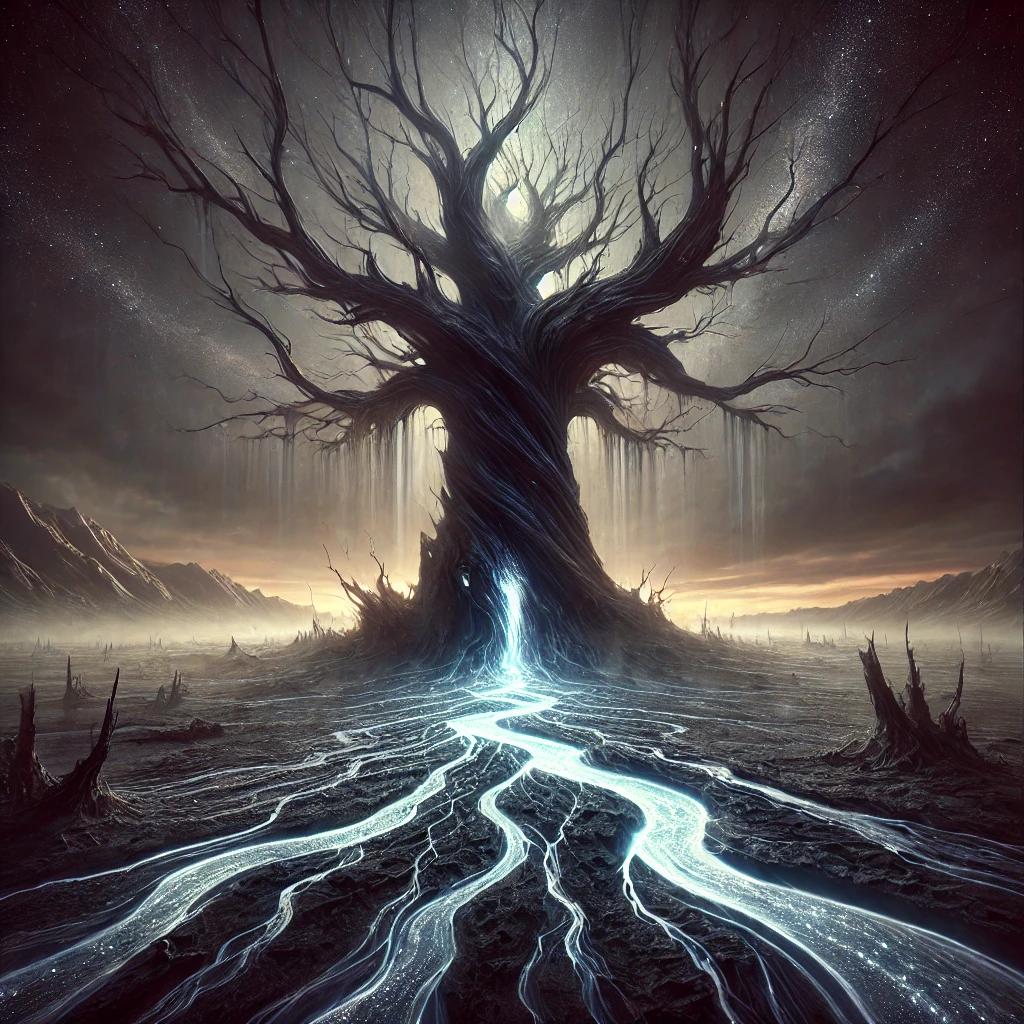




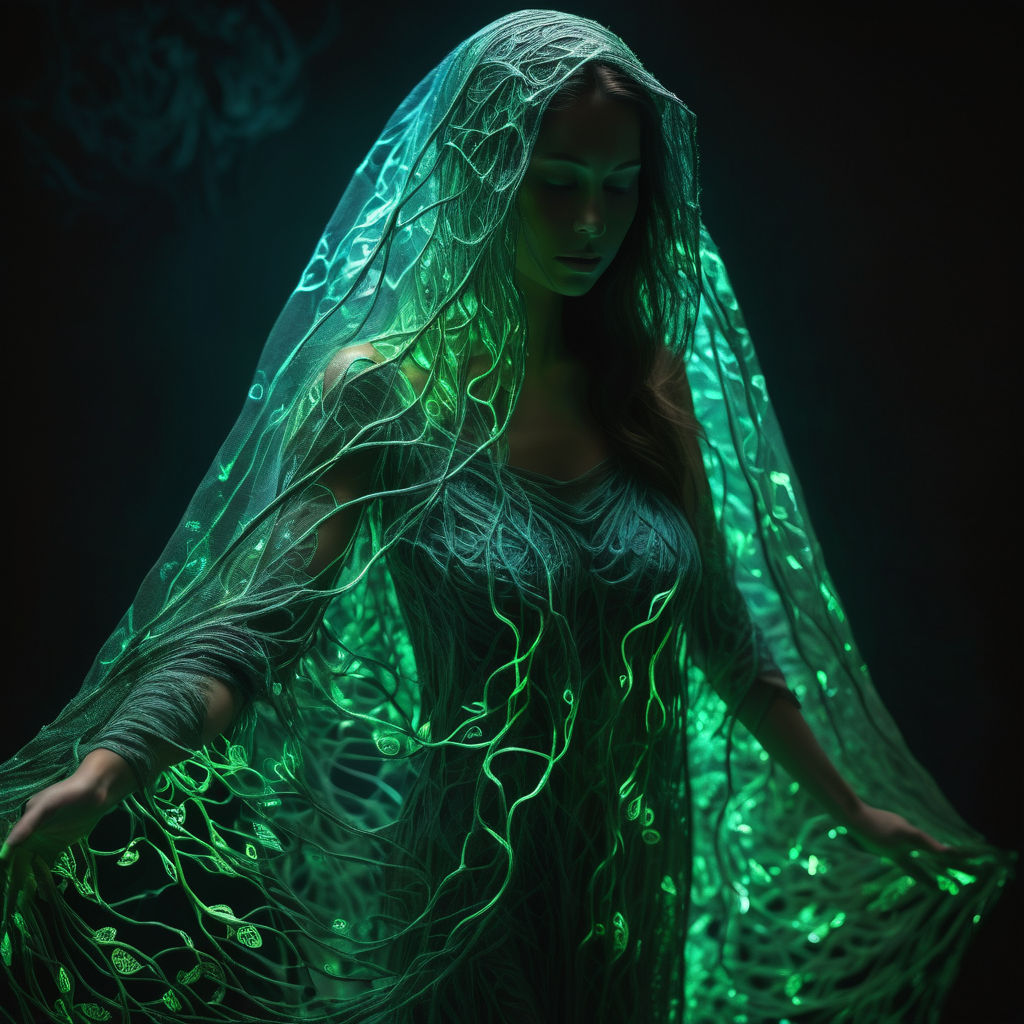
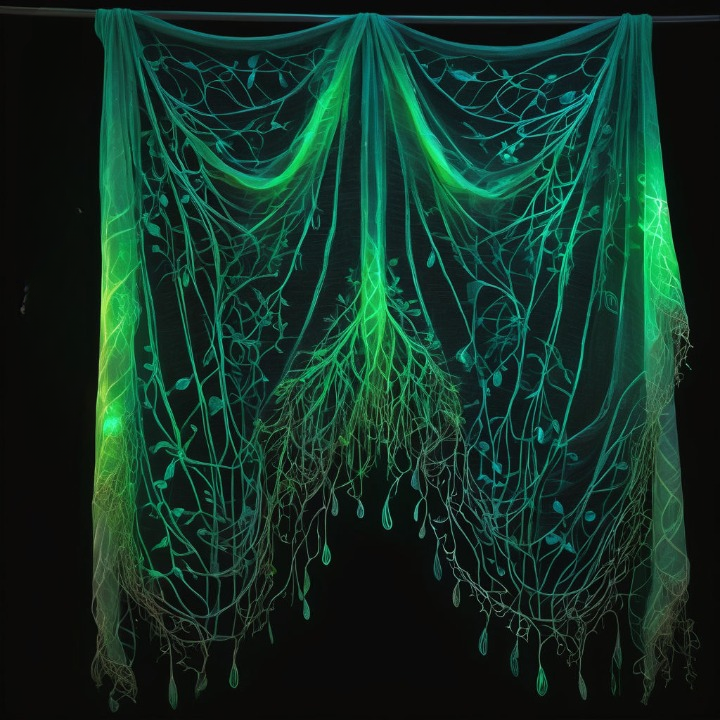
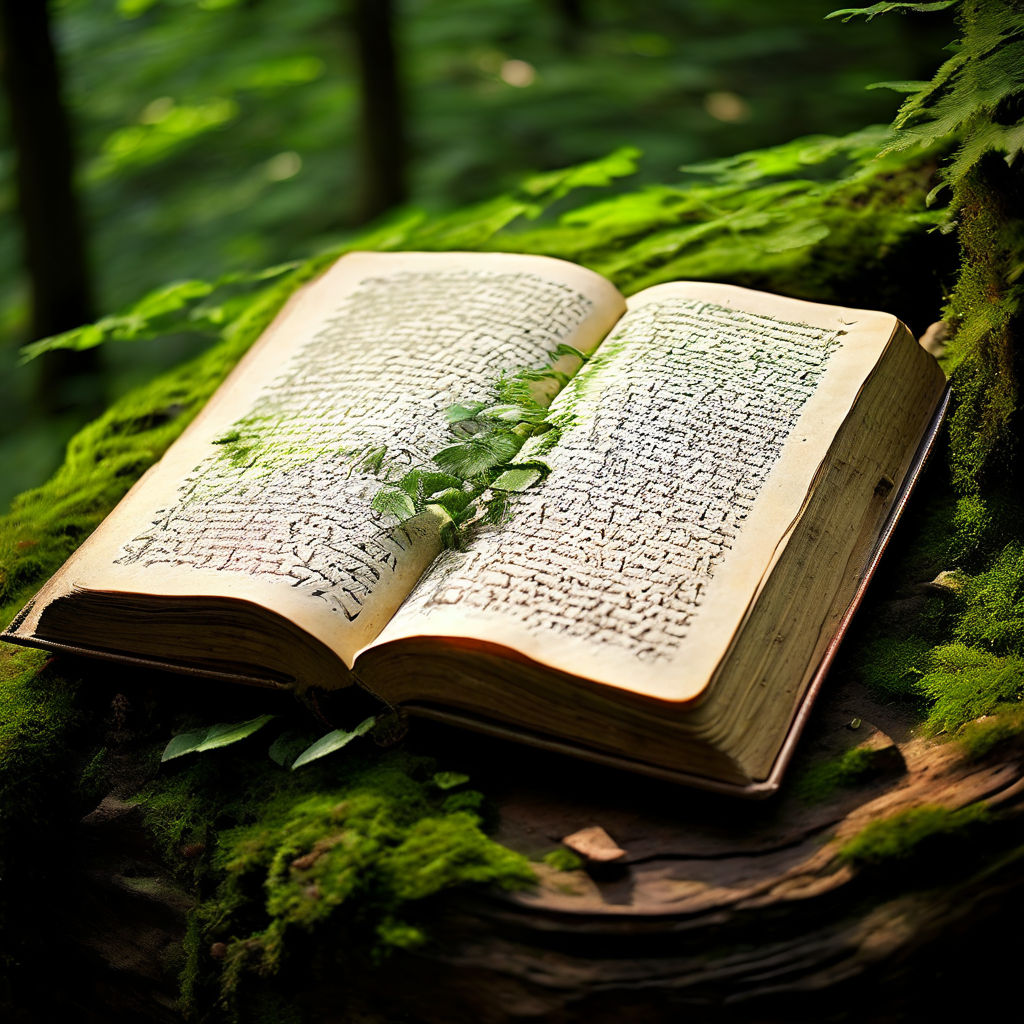

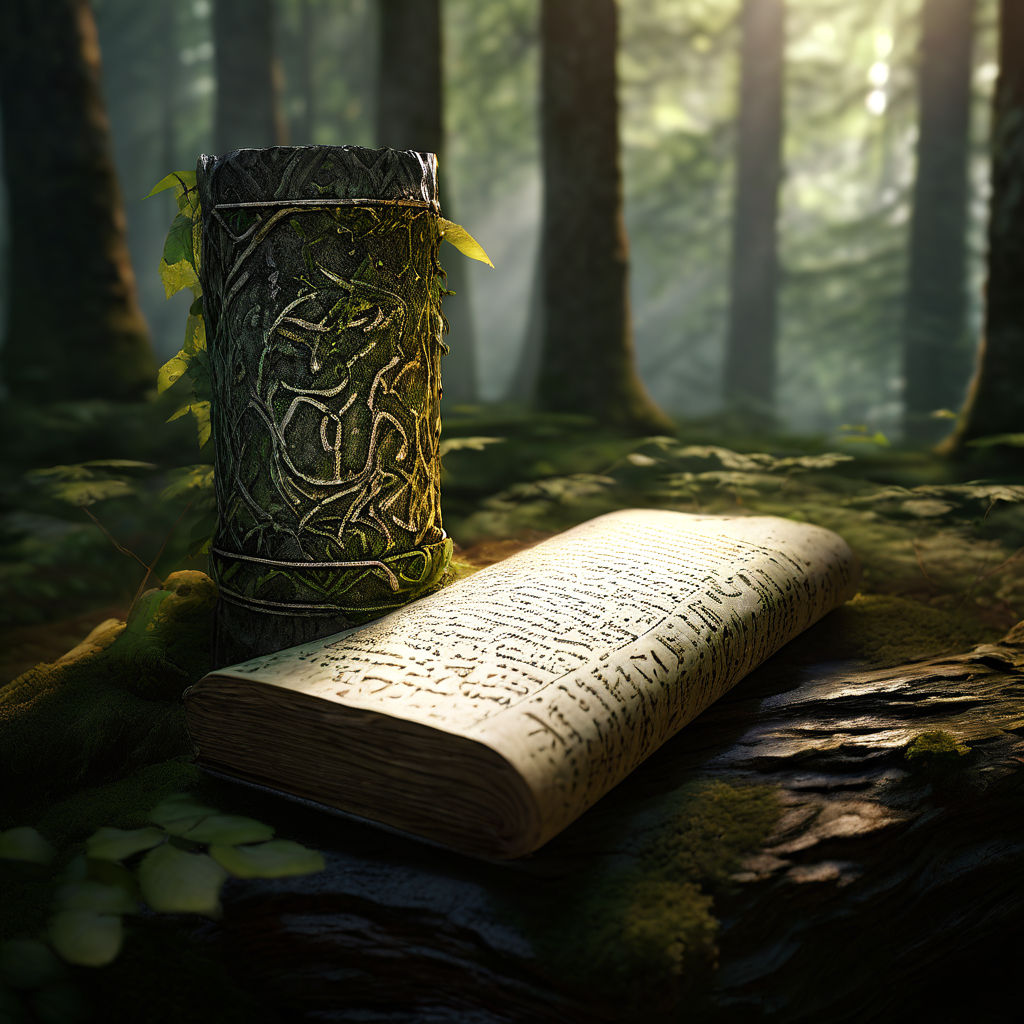
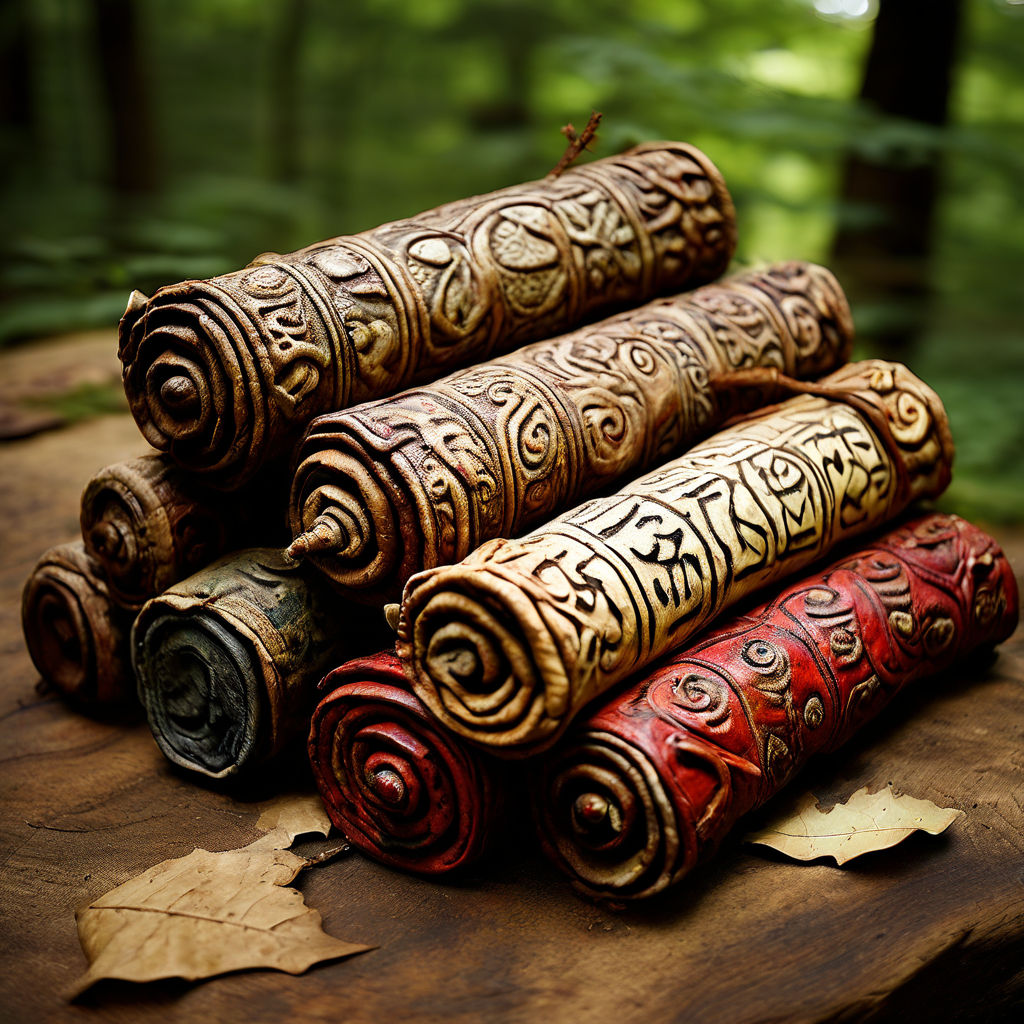
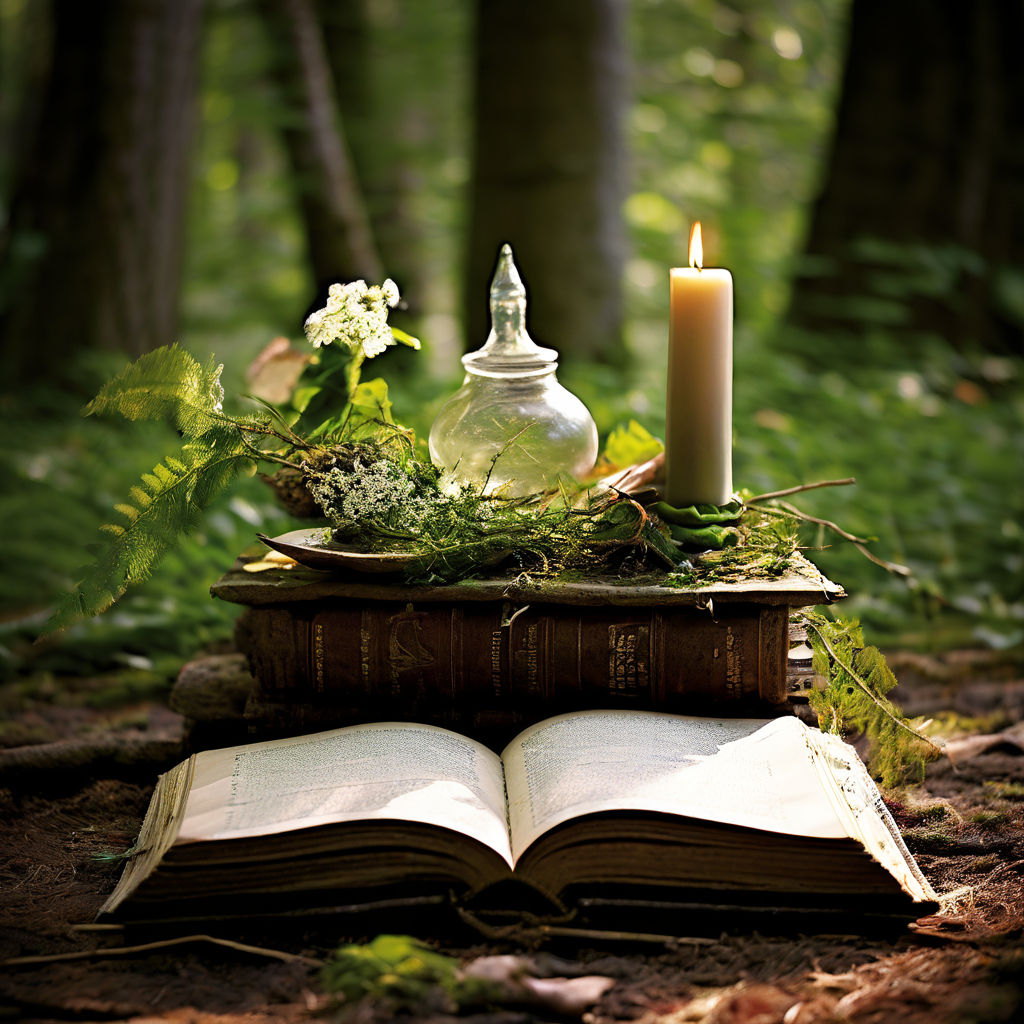


Congratulations on completing chapter 3 of "The longest journey". Here is a little memento to remember your story by:
Thank you!